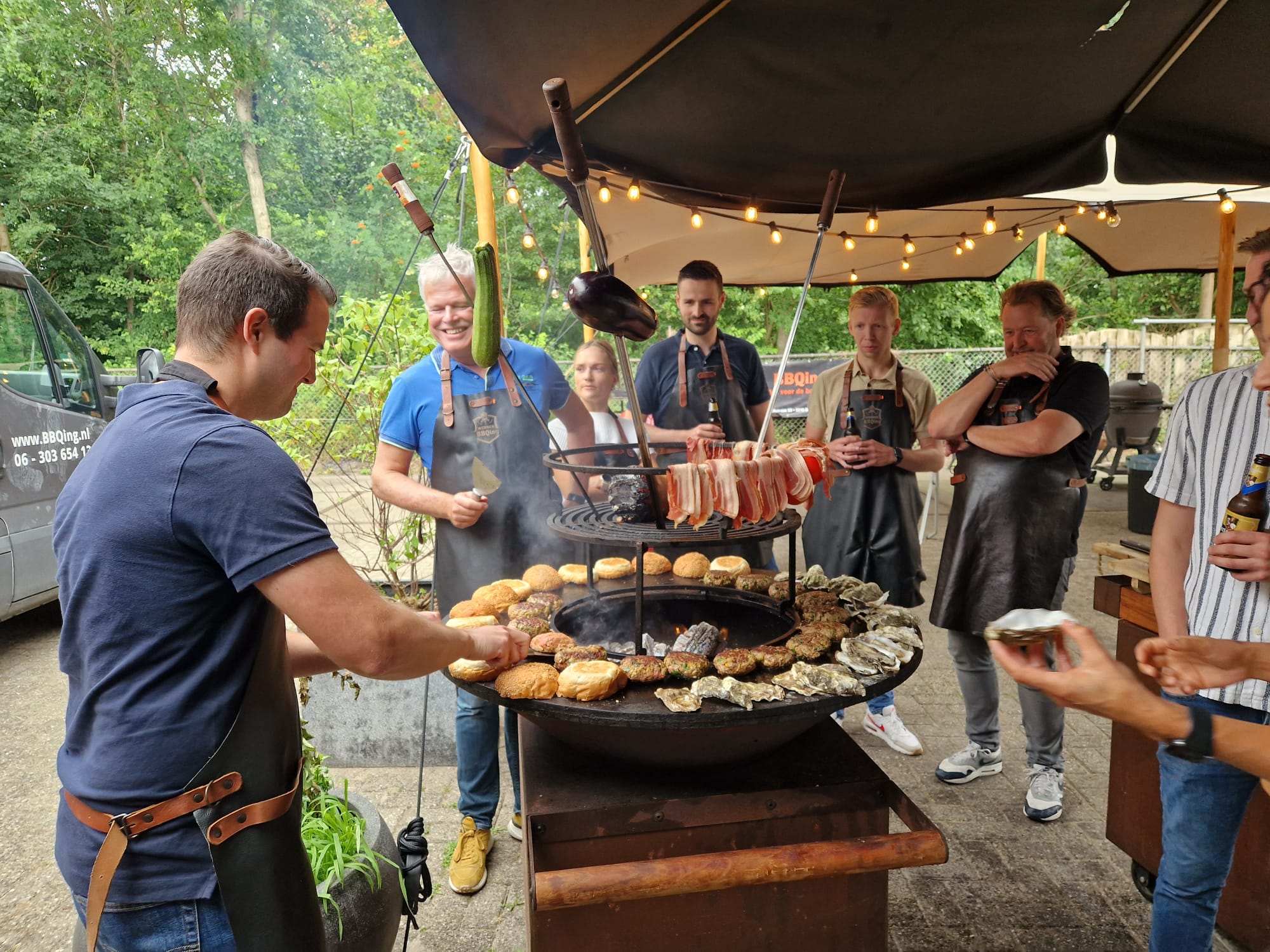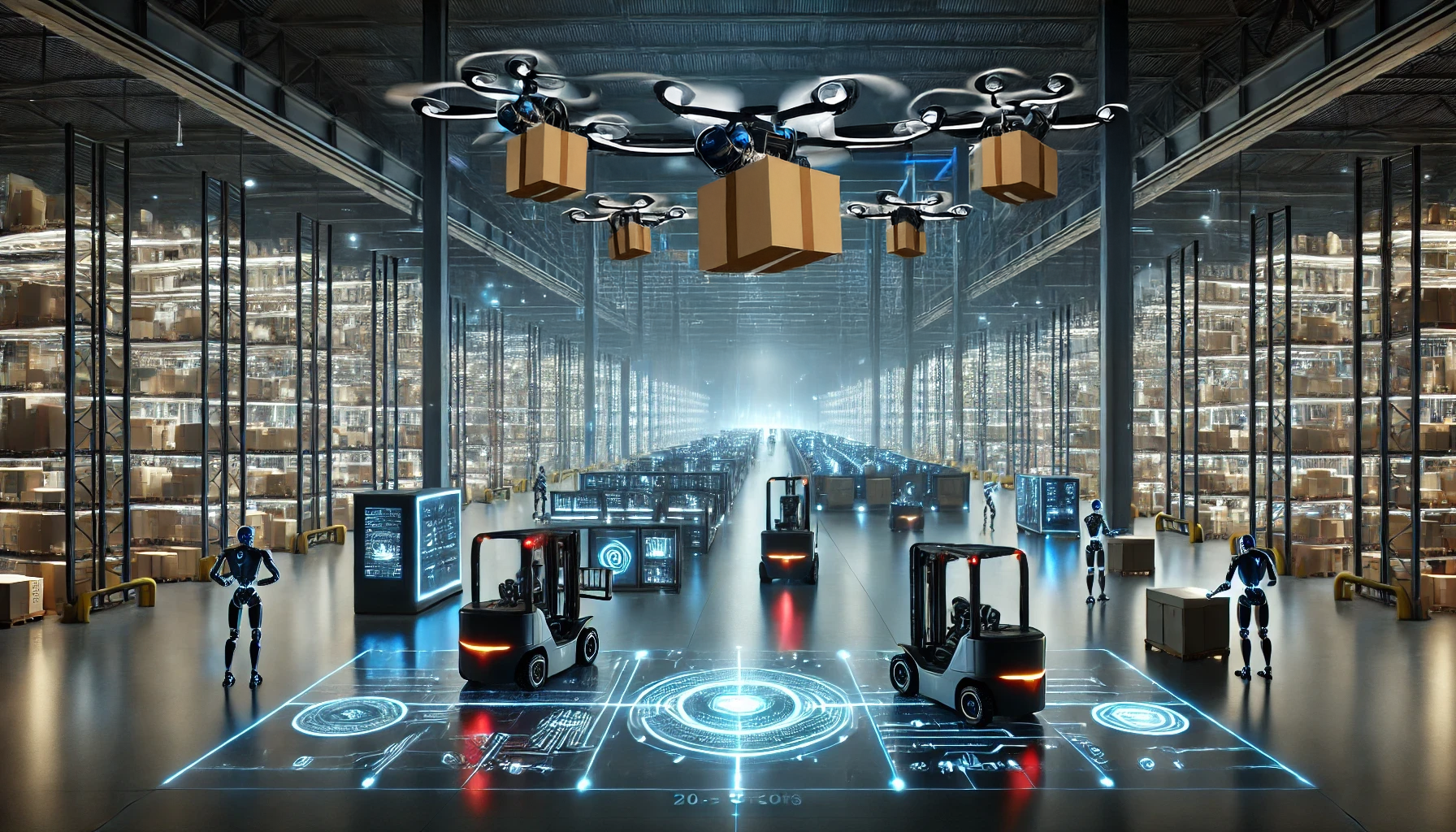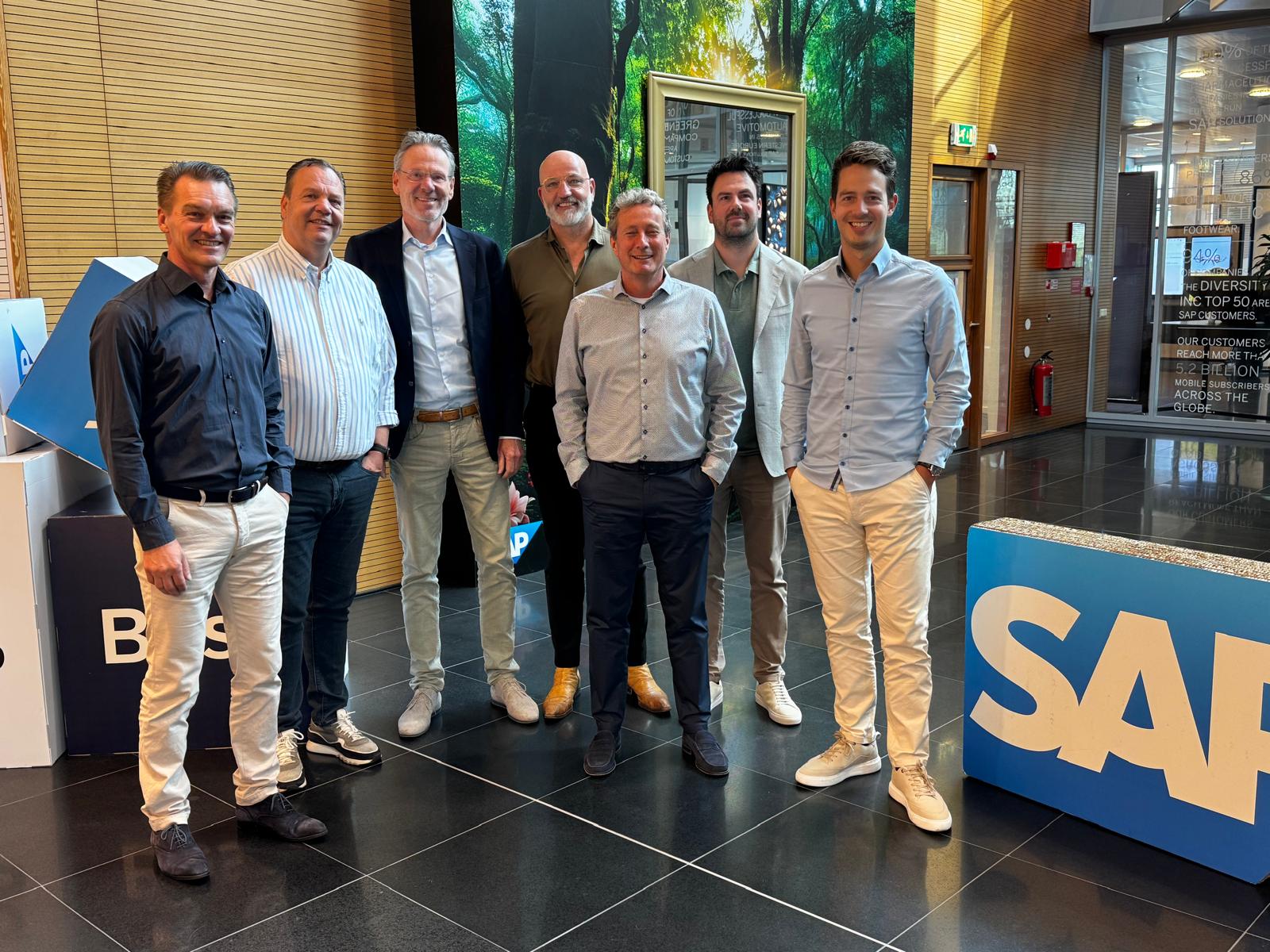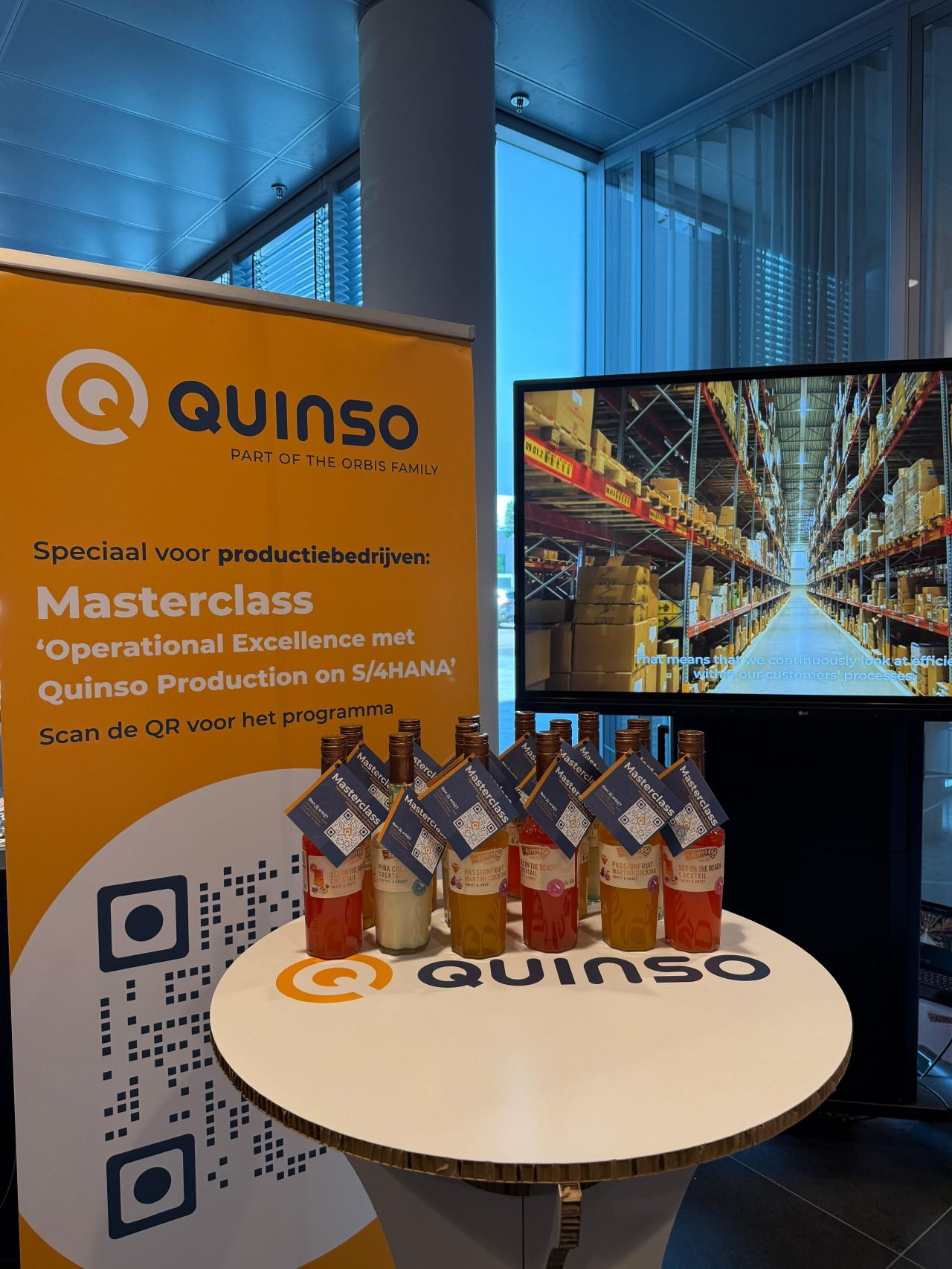TWNKLS is an extended business partner of Quinso. TWNKLS and Quinso are collaborating on augmented reality in the supply chain.
Author: Gerben Harmsen | TWNKLS
During connect to innovate, I got to zoom in on a promising innovation of the moment: augmented reality. How do supply chain professionals extract the greatest value from this technology? How do they integrate it with it their existing processes and systems? And what does that yield? In this blog, I describe four concrete cases. For anyone who could not be there on Oct. 4 or who just wants to read back the information.
On Oct. 4, Connect to Innovate hosted its special SCM track. In all, there were 12 speakers who all shared their views on the future of supply chain management. My own session was part of the afternoon program, which gave me a nice opportunity to listen to Patrick Crampton-Thomas, VP SAP Supply Chain Management, speak in the morning. He began his session by touching on the five biggest market drivers within SCM. For those who were not there, I repeat them briefly:
- Connectivity: we order products anytime and anywhere with our smartphone.
- Personalization: personalized products are the new norm.
- Speed: we expect orders to be delivered at lightning speed.
- Collaboration: suppliers, departments and partners are part of the supply chain.
- Responsive manufacturing: you must have the flexibility to deviate from the schedule when the situation calls for it.
That reminded me of augmented reality, which has been my area of expertise since early 2011. Can this technology help supply chain professionals drive the above developments within their organizations? As far as I am concerned, the answer is simple: yes, to all five of the above. I like to illustrate this with the following cases, which come from my own “kitchen”: TWNKLS.
1. IKEA place
On Sept. 13, 2017, IKEA launched a brand new app they developed with us: IKEA Place. The app allows you to virtually place IKEA products in your own living space where they are displayed in 3D. On true scale, with almost caressable fabric textures and just the right lighting conditions. In this way, IKEA increases the engagement of their customers, who can now actively engage with their products at home instead of flipping through paper catalogs fairly mindlessly and in a hurry.
The app also helps IKEA slowly move from large stores and even larger warehouses to smaller shops and less inventory. The consumer’s home becomes the showroom, so to speak, and the tablet the smart catalog. Thanks to augmented reality, IKEA will soon even be able to open stores on Rembrandtplein or on Rotterdam’s Coolsingel, centrally controlling their warehouses. That in turn makes it easier to react more quickly to changes in the market.
Patrick’s market drivers: IKEA Place allows consumers to configure and order products with their smartphones (connectivity) at lightning speed and at home (speed), allowing IKEA to say goodbye to large inventories and respond faster to changes in the market (responsive manufacturing).
2. WEMO
WEMO develops, builds and installs production lines and tools for punching, outside, joining and machining sheet and steel materials. WEMO’s products are very specialized and relatively complex to use, which makes it far from easy for operators to properly operate and maintain those machines.
Through augmented reality, we have now tackled that problem. Operators operate the machine with special glasses. The control panel is placed virtually in the room. From the ERP system, the operator sees order information appear. What is he working on now and what orders are still to come? He starts and stops the machine with simple hand gestures. And on the right, it reads all the sensors from the production line – information retrieved directly from the underlying manufacturing execution system. The screen on the left is the remote expert. If something goes wrong, the operator can immediately send a signal to the technical specialist. That person can then literally look over the operator’s shoulders and give instructions.
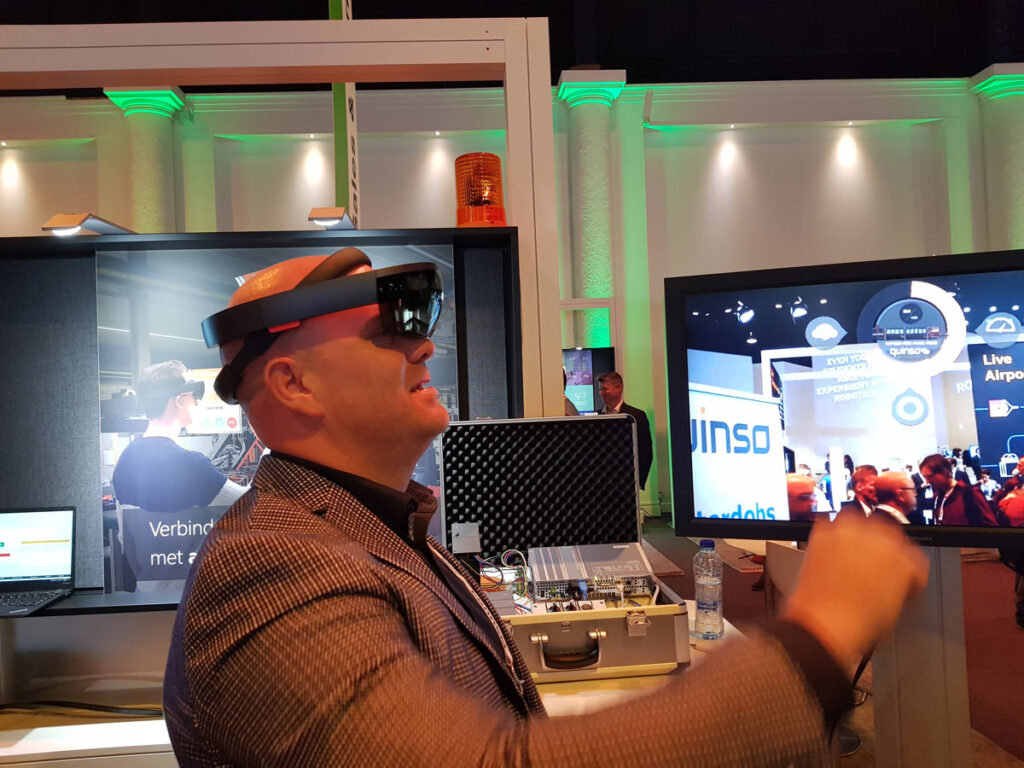
Patrick’s market drivers: with the augmented reality application, WEMO ensures that customers can now perfectly operate and maintain their machines. Whereas previously a specialist had to be flown in to fix downtime, now the operator picks it up himself. As a result, the machine runs many more hours, speeding up the production process (speed).
3. OTOLIFT
Otolift is a wonderful Dutch family business that manufactures stair elevators for the Dutch but also for the international market. A stair elevator is a very personal product that almost always needs to be custom manufactured. Because every staircase is different, and the location of electrical outlets, stair railings and doors must of course be considered. The process from initial customer contact to elevator installation previously took about one to two months. Augmented reality has changed that.
We developed a tool for Otolift that allows a stairlift to be visualized in the real environment in people’s homes, taking into account all objects that might be in the way. Useful for consumers, but also for sellers. Because they now measure the elevator themselves with their tablet, completely error-free and accurate to the millimeter. Once the salesperson leaves the customer, he sends dimensions directly to the factory. As a result, the turnaround time has been shortened to about one to three weeks. For a customized product!
Patrick’s market drivers: Otolift dramatically shortened the sales and production process (speed). The company uses augmented reality applications for sales, allowing customers to really see the product in front of them, as well as for measuring (connectivity), providing a personalized stairlift within weeks (personalization).
4. Quinso and TWNKLS: your factory in a case
In this network economy, it is important to forge smart coalitions. To find parties that complement you, so you can offer customers new and more complete products. TWNKLS has found an ideal partner in Quinso, SAP Gold Partner and expert in software for logistics, (wholesale) trade and manufacturing. We complement each other perfectly, combining the knowledge of augmented reality with the knowledge of supply chain processes and associated underlying systems. Thus, we are creating a whole new field.
HoloLens
Together, we help organizations connect their ERP system and their SAP MII system with augmented reality. This creates something special: a factory in a suitcase. Armed with a HoloLens, operators can control and drive their production line very easily. In fact, because they no longer always have to be physically on that belt, they can even manage two or three production belts simultaneously. They know exactly where to be at what time. One look at the dashboard of their glasses and they are aware of the current situation, and issues that require action. They are not overloaded with information, but see very segmented exactly the information that is relevant at that moment. During connect to innovate, Quinso gave a wonderful demo on this. On a HoloLens, of course.
Patrick’s market drivers: we connect the production floor and the ERP system with augmented reality (connectivity). Thus, we make it easier for operators to do their jobs and intervene quickly when needed (speed and responsive manufacturing). And yes, with the fruitful coalition between Quinso and TWNKLS, we also immediately hit Patrick’s last market driver: collaboration.
Augmented reality: an indispensable innovation
At TWNKLS, we don’t like to talk about what might someday be. We would much rather talk about concrete applications that are already adding value to supply chains. The above cases are “living” proof that augmented reality really can be invaluable for companies to produce faster, have less machine downtime and shorter sales cycles. The condition, however, is that you must properly integrate augmented reality into the business process by connecting it to underlying systems. Want to know more? Please feel free to contact me!
About Gerben Harmsen
On April 1, 2011, Gerben Harmsen and Lex van der Sluijs founded TWNKLS, a full-service agency focused on the creation, development and implementation of augmented reality applications. Because TWNKLS “dove” into this market over six years ago, it is one of the few companies worldwide that is developing high-level applications with this much impact.

